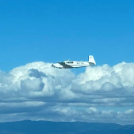-
Members Online
- NotarPilot
- 76Srat
- MarquezJC
- wiseng2
- NickG
- Alan Maurer
- 00-Negative
- Crawfish
- Lax291
- Andy95W
- TCC
- milotron
- varlajo
- PT20J
- IntoTheVhoid
- Reek778
- TNdebdriver
- TangoTango
- Mark89114
- LardLad
- Marc_B
- mooniac58
- clh
- Greg Ellis
- 303mooney
- exM20K
- Rick Junkin
- Thedude
- Mister_Bevilaqua
- 1980Mooney
- Scottknoll
- 1964-M20E
- hammdo
- DonMuncy
- Scott Ashton
- BloodRedSkies
- ad5ut
- DXB
- MooneyMitch


Recommended Posts